
8 Surprising Facts about Florida
When people contemplate Florida, the images that most readily come to mind for most people probably include long sandy beaches, hot & humid sunny days, Disney World, Miami, the Florida Keys, the Everglades and possibly Cape Canaveral, where NASA rockets are launched into space.
These are all great aspects of the Sunshine State, to be sure. But Florida also has many fabulous little-known places, intriguing historical events and other rather surprising facts.
Here’s a round-up of genuinely surprising things I’ve learned about Florida since my parents moved down here in late 2010…
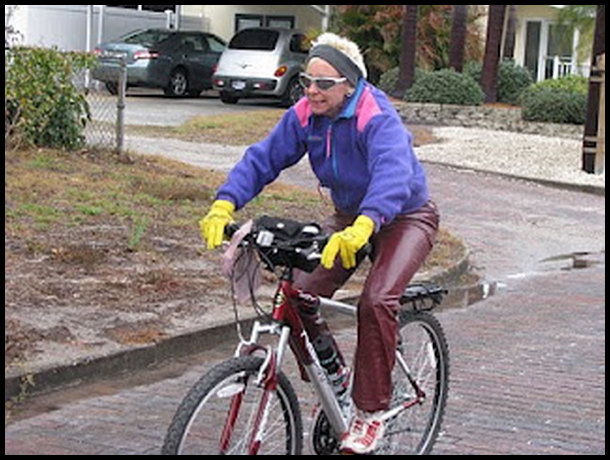
1. Florida gets cold in winter
I don’t know about you, but I’d always imagined Florida as being hot, hot, hot all year round. However, that’s not true. While Florida does not have a solid four-season climate like most US states, there are distinct seasons here, including a chilly-to-cold winter.
Now I’m not talking cold like in Montana, Vermont or even New York. Florida does have a comparatively mild winter. But it’s usually cold enough from about December through February or March to need long pants, a sweater or two, a coat and quite possibly a hat and even, occassionally, gloves.
Typical winter day time temperatures are in the low-to-mid 60s F / 15-18C, which is chilly enough for most people to wear warm clothes. Night time temps are usually in the low-mid 50s F / 10-13C, but regularly dip down to the mid-40s F / below 5C. There might even be the occassional 30sF / less than 0C night.
Most Floridians need to crank on the heat inside their homes or stoke up their wood fireplaces (Yes, houses in Florida have fireplaces!) at night in winter months. Some people often need the heat on in day time, too.
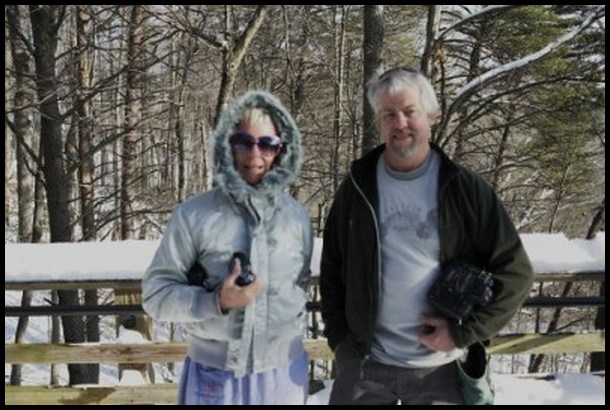
2. It occasionally snows in Florida
Snow does not hit Florida every winter. Nor even most winters. But once in a blue moon, it snows in Florida!
Case in point, just 10 days ago on January 3, 2022, snow flurries hit northern Florida as a heavy snowstorm rolled across the mid-Atlantic coast.
My brother has been living in the Tampa/St Pete area for over 30 years and he can recall at least three winters when it snowed briefly, always much to his great surprise.
Snowfall does not occur often, to be sure. And it’s always a big shock to Floridians when it happens. But snow does hit the sunshine state occassionally.
According to weather statistics for Florida, there were 21 snowfall incidents in the 20th century and 16 incidents in the 21st century. That sets it at one to two snowfalls per decade. Most snow hits northern Florida’s panhandle area. But, as my brother has experienced, snow reaches down to mid-state on occasion.
One of the most dramatic snowfalls in Florida’s recent history occurred in 1977 when heavy snow fell in southern Florida. Then in 1989, northeast Florida received a lot of snow over the winter holidays, where it was dubbed “Florida’s first white Christmas”.
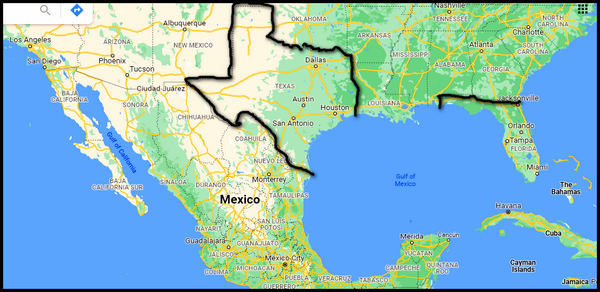
3. Florida is not as far south as you might think…
Although the furthest southern point of the Florida Keys is, in fact, the southernmost point of the continental USA, most of the Florida is at the same latitude as Texas.
Florida is also at the same latitude as Egypt, Saudi Arabia, northern India, Taiwan, northern Mexico and the Baja Mexico peninsula.
More specifically, the large state of Florida is situated between 31 N (at the northern border) and 24 30′ N in the Keys.
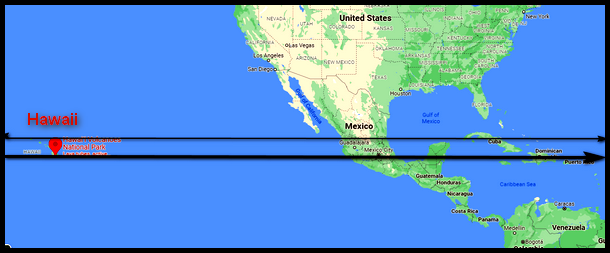
4. Hawaii is farther south than Florida!
Recently I’ve been researching Hawaii, hoping to go there in February. I was very surprised to learn that the Hawaiian islands are situated further south than Florida.
I had always envisioned Hawaii to be about due-west of the US west coast- maybe Oregon and California. But in fact, Hawaii is located considerably further south than California, even further south than the long peninsula of Baja Mexico. Hawaii sets at about the same latitude as Cuba, the Dominican Republic & Puerto Rico.
Technically, the considerably spread-out Hawaiian islands are situated between 28 27′ N (northernmost island) and 18 55′ N at the southern tip of the Big Island (Hawaii island). So clearly there is a lot of overlap in latitudes between Florida and Hawaii. But Hawaii’s southernmost shores on the Big Island are much further south than the Florida Keys.
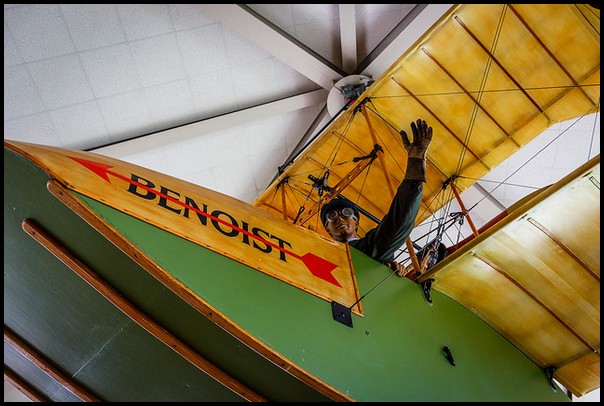
5. The world’s first commercial flight took place in Florida
Probably the most world’s most famous historical flight event occurred in 1903 when the Wright Brothers’ successfully flew their handcrafted airplane for the first time, thus launching the field of aviation.
However, I’ll bet very few people know that the world’s very first commercial flight took place in St Petesburg, Florida.
Ten years after the Wright brothers launched the world’s first flight, an enterprising man named Mr. Fansler came up with the idea of offering a passenger service by airplane between St Petersburg and Tampa by flying over Tampa Bay. He bought a plane, employed a pilot, scheduled flights and marketed the new service.
On January 1, 1914, pilot Tony Janus flew an open-cockpit Benoist XIV Flying Boat across broad Tampa Bay to Tampa City for the first time in history, He was carrying US mail, which made the flight technically a commercial one. The first time flight was used for commmercial purposes.
The well-publicized event was attended by over 3000 spectators and celebrated with an Italian band playing in a grand parade. The single passenger on the flight, former St Pete Mayor, Abram Pheil, had won his auctioned ticket for $400.
The plane skimmed across Tampa Bay at only 5 ft above the water and took 23 minutes to reach Tampa. The new passenger flight was considerably faster than any other means of transport between the two cities. By boat, the trip took about two hours, 4-12 hours by train or 20 hours by driving.
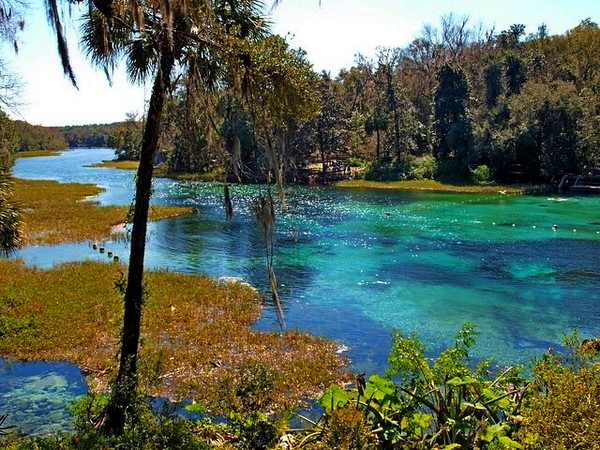
6. Florida has over 1000 natural springs
The Florida peninsula consists primarily of a vast limestone karst plateau with a shallow aquifer (ground water system). The land is extremely porous, like Swiss cheese, and is largely filled with ground water. There are extended systems of caves, underground rivers, sinkholes and natural springs throughout the state.
Florida boasts over 1000 natural springs. Most are located in central and northern Florida.
Before the advent of amusement parks, Florida’s springs were great tourist attractions. Tpday they continue to be popular destinations for both locals and visitors alike.

7. A whopping 29% of Florida’s land area is protected in parks
Of Florida’s 38,372,000 total acres of land area, a whopping 10,000,000 acres is protected in a combination of national parks and preserves, state parks, recreation areas, campgrounds, preserves, trails and trailheads.
Florida ranks #6 in the US for states with the largest number of national parks. Florida’s 11 national parks/preserves include some very unique habitats, such as the Everglades and the Dry Tortugas Islands.
Note that the US has a total of 63 national parks, so Florida’s 11 parks account for 15% of the total.
Perhaps even more surprising, Florida has 191 state parks. That means Florida ranks #5 in the US for number of state parks. The state-held public lands include nature preserves, recreation areas, campgrounds and extensive trails.
All these parks present a huge diversity of habitats, eco-systems, climates, geography and natural features. There are vast swamps (think Everglades); dozens of small lakes, 1000+ natural springs and many rivers; beaches and shorelines on the Atlantic Ocean, Caribbean Sea and Gulf of Mexico; diverse forests; hundreds of miles of hiking and cycling trails; rock formations, canyons and ridges; as well as other habitats.
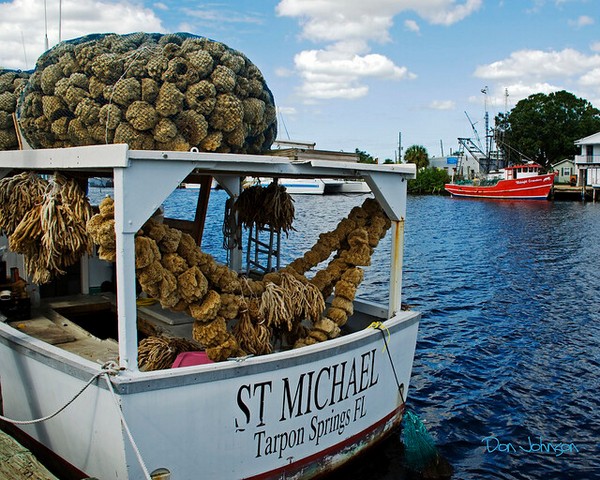
8. Tarpon Springs, FL has the largest Greek population in the USA
Located on the Gulf of Mexico, about halfway down the coast, Tarpon Springs is a charming & unique historic Florida town.
It was settled by Greek immigrants in the 1800s. They built distinctive Greek architectural homes, stores and restaurants. They also brought their delicious Greek cuisine, culture and sponge diving.
By the late 1800s Tarpon Springs became home of the largest US sponge diving industry. Soon Tarpon Springs was known as ‘Venice of the South’ as well as ‘The Sponge Capital of the World’.
It became a very popular winter destination for wealthy northerners, who built many gorgeous Victorean-style homes.
Today, Tarpon Springs is a popular destination for local Floridians, national and international tourists. The historic Sponge Docks still continue the sponge industry. Many sites in town are listed on the National Registry of Historic Places, including the historic Greektown, various Victorean homes and other buildings.
Visitors can admire the historic Greek and Victorean architecture, learn about sponge fishing, dine on delicious Greek food, browse the quaint shops and art galleries, discover the town’s history at local museums; or buy sponges and Greek-inspired souvenirs.
You might also like:
10 Surprising Facts about St Pete, FL
10 Great Outdoor Adventures in Florida
Unique Scuba Diving Spots in Florida
=================================












 Hi! I'm Lash, an American nomadic world traveler who's been traveling solo since 1998. I’m passionate about traveling the world nomadically and then sharing it all with you. I hope to inspire you to travel the world, to entertain you with tales from the road, and to help you reach your travel dreams. Welcome!
Hi! I'm Lash, an American nomadic world traveler who's been traveling solo since 1998. I’m passionate about traveling the world nomadically and then sharing it all with you. I hope to inspire you to travel the world, to entertain you with tales from the road, and to help you reach your travel dreams. Welcome! 




2 pings
6 Surprising Facts about Hawaii - LashWorldTour
2022/01/27 at 12:03 am (UTC 8) Link to this comment
[…] 8 Surprising Facts about Florida […]
27 Things I Love about St Pete, Florida - LashWorldTour
2022/02/16 at 11:43 pm (UTC 8) Link to this comment
[…] 8 Surprising Things about Florida […]